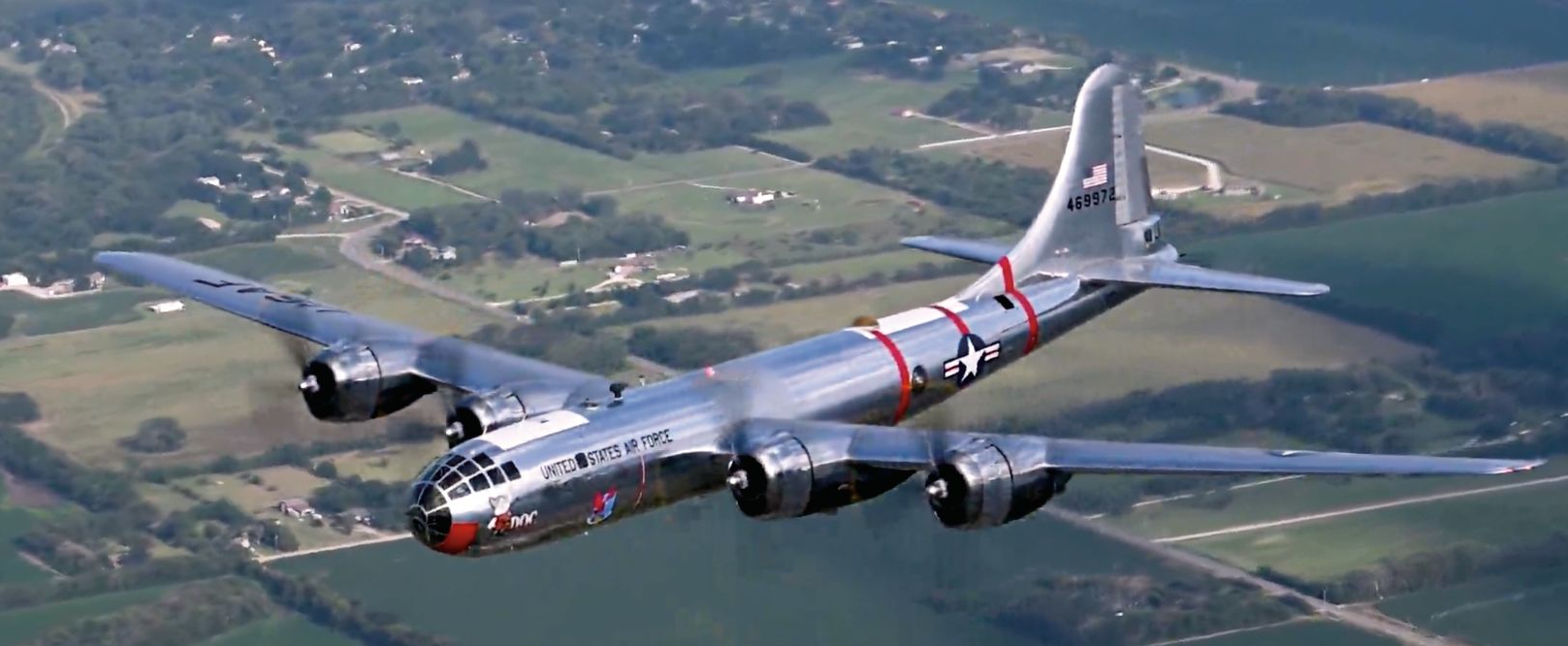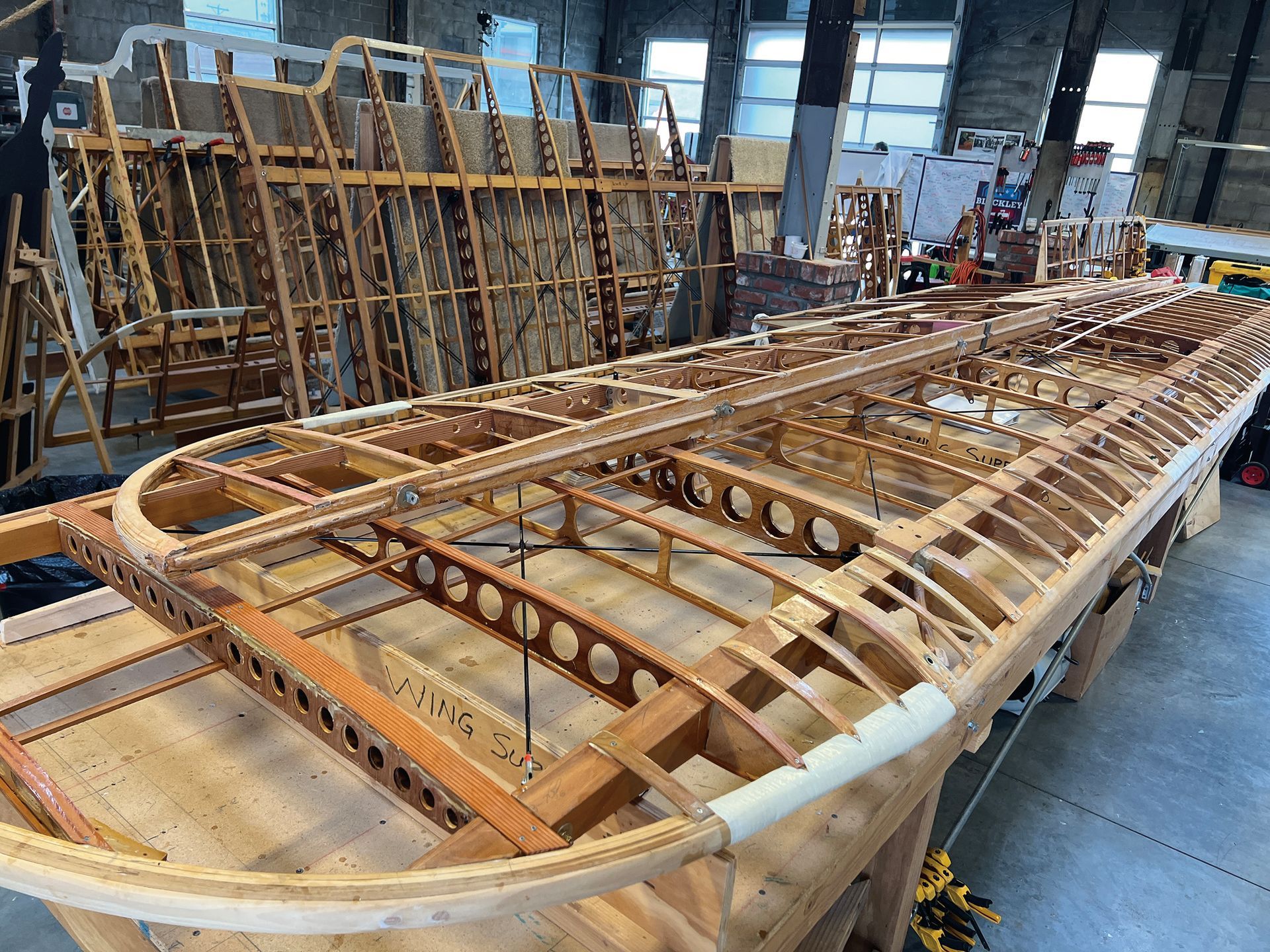Jet Fuel in Their Veins
Written by Paige Feikert
Jet Fuel in Their Veins
The Early Aircraft Entrepreneurs Who Shaped Wichita
Written by Paige Feikert
Like most people who were born and raised in Wichita, aviation was always a part of Jeff Turner’s life — even when it wasn’t obvious.
“When you grow up here, you have no idea the impact aviation or industry in general has on our community,” said Turner, former general manager of Boeing Wichita and eventual CEO of Spirit AeroSystems until his retirement in 2013. “You don’t realize the good jobs people have had for years is what drives the vitality of your community.”
Jeff Turner’s Story
Turner graduated from North High School at a time when Boeing was laying off tens of thousands of workers nationwide, cutting their workforce in Wichita to just around four thousand. According to a New York Times article from June 1971, the unemployment rate in Wichita grew from 4.3 percent in January 1970 to more than 10 percent in June 1971. As a student at Wichita State University studying mathematics with an emphasis in computer science, Turner was hoping to work anywhere but Boeing. But upon graduation, Boeing was the top job offer, the only job offer as Turner explained, and he was hired as a part time computer programmer.
“I swore I would never work for Boeing, because I had seen the pain from all of the layoffs that had occurred, but when I graduated it was the only job offer I got, so I changed my mind and ended up working for Boeing,” Turner said. “I came to learn about the tremendous depth of knowledge and capabilities of people, and what a great product Boeing made that was necessary for our economy and for humanity.”
Turner went on to work for Boeing for more than 30 years and led Spirit from its inception in 2005 until he retired in 2013. Through his time in the aviation industry, Turner realized just how significant aerospace is to Wichita, and how important Wichita is to the global aviation industry.
“We live with incredible blessings every day and just don’t realize it,” Turner said. “We go ‘Oh there’s Plant Two, that’s where we build fuselages,’ we don’t go ‘Wow, that’s where B-29s were built, this is where thousands of people have worked and it has built our community.’ ”
Turner is referring to Plant Two on Spirit’s main campus in south Wichita — a facility that was built to manufacture B-29s during WWII and is now home to the manufacturing lines that build the Boeing 737 fuselage — something that has called Wichita home for more than 50 years.

B-29 Doc Superfortress built in Boeing Wichita’s Plant 2 in 1944 and restored by the Wichita nonprofit organization Doc’s Friends
ICT Shapes Early Aviation History
But Wichita’s ties to the aviation industry date back much further, more than a century ago, when Clyde Cessna established the first airplane manufacturing facility in Wichita, building The Comet just one year later in 1917. The Comet had a single set of wings, known as a monoplane, and featured a semi-enclosed cockpit. The aircraft set records for airspeed and distance.
By 1925, Travel Air was formed when Cessna teamed up with Walter Beech and Lloyd Stearman, who both started their aviation careers at Laird Swallow Airplane Company — Beech was first hired as a test pilot and Stearman as a mechanic. The three men eventually separated to form their own businesses, but remained connected — a life-changing connection, particularly for Beech, who met his wife and eventual business partner, Olive Ann, through Cessna.
“Clyde Cessna hired her and that’s how Walter and Olive Ann met,” said Jennifer Pitt, granddaughter of Walter and Olive Ann Beech. “Walter was the barnstormer, and Olive Ann was about refinement and class.”
In the late 1920s, the aeronautical engineering department was established at Wichita State University to support the growth of the industry locally. It is now known as one of the oldest aerospace engineering departments in the country.
Through the 1930s, Cessna Aircraft Company and Beech Aircraft Company manufactured well-known aircraft, such as the Cessna C-34, called the Airmaster and considered the world’s most efficient airplane. The Beechcraft 17 Staggerwing made its first flight in 1932 — a biplane with staggered wings known for luxury and high speed.

‘The [Beechcraft] Staggerwing was iconic, it’s like the Model T of airplanes.’ — Jennifer Pitt
By the 1940s, Wichita became a hub for military aircraft. Beech produced several aircraft, including the Beechcraft Model 18, known as the C-45 Expeditor used for military training and Cessna built T-50 Bobcats and the Bamboo Bomber, among others.
By then, the Boeing Company had taken over the Stearman Corporation, and Wichita operations were focused on building the B-29 Superfortress — a four-engine propeller-driven bomber, and the same model of military aircraft that dropped the atomic bomb on Nagasaki to end the second World War.
“We don’t realize how personal it is,” said Turner, who is also the Chairman of Doc’s Friends — an organization responsible for the restoration of the B-29, ‘Doc.’ “If you go back in your personal history and ask yourself, ‘What would happen if there had not been a B-29?’ If the war would have persisted, where would you be today? It’s fascinating.”
By the end of WWII, Boeing Wichita was producing 4.2 Superfortresses each day, ultimately making 1,644 of the 3,888 B-29s built.
The Aircraft Industry Shapes ICT
The military aircraft production completely changed the city. Neighborhoods like Planeview, Hilltop Manor and Beechwood were created to accommodate the thousands of workers moving to the city. Rosie the Riveters stepped in to fill the labor gap, and buses ran routes to help workers commute to Boeing from neighboring suburbs — the first facility of its kind to do so in the United States.
Despite post-war layoffs at Wichita’s aviation companies, the industry continued to thrive and Wichita continued to cement itself in the aviation landscape. In the early 1950s, the United States Air Force established a base in Wichita as a training center for B-47 Stratojet crews, another aircraft manufactured at the then Boeing-Wichita site. In the mid-1960s, Bill Lear built and marketed the Learjet 23 — known for popularizing the business jet industry. Later, in 1985, the National Institute for Aviation Research (NIAR) was established at WSU, now known as the largest aviation research center in the country. In the 2000s, WSU Tech opened the National Center for Aviation Training, a facility used for teaching students aviation manufacturing and composites technology skills.
While the industry has changed throughout the years, one thing has remained the same: a major piece of Wichita’s identity is rooted in aviation, and a major piece of aviation history is rooted in Wichita. As time passes, and the industry continues to fluctuate, and signs on buildings change, Wichita residents must remember that flight as it is known today wouldn’t exist without the Air Capital of the World.
“We have a deep sense of responsibility, because we stand on the shoulders of men and women who gave their lives literally and in the industry to build our community,” Turner said. “It’s something that our community should be very proud of, but also, it didn’t just happen from nothing, it has to be maintained.”
To learn more about aviation history in Wichita, check out the Kansas Aviation Museum and the B-29 Doc Hangar located at Eisenhower National Airport. “I’ve been following Erwin for a quarter century or more because we’re inspired by him, by what he did,” said Greg Zuercher, a board member for the Bleckley Foundation. “It always has, it always will inspire us.”
The Bleckley Foundation was established to share the memory of Lt. Bleckley and his heroic actions during WWI. The group is behind the DH-4 restoration effort, which will include Lt. Bleckley’s 50th Aero Squadron “Dutch Girl” insignia and the tail number 6 — replicating the DH-4 from Lt. Bleckley’s fateful final flight.
Celebrating National Aviation History Month










